Two weeks to I’m finally setting off for the long awaited TGO of 2022!
This is the TGO that I applied for back in 2019 which for obvious reasons got cancelled during 2020. I remember back in early 2020 trying to be hopeful that the challenge would still go ahead and COVID would be over within a few weeks, how wrong was I! 2021 I had the option to take up my place which ran later than usual, June rather than May. Having already waited 3 years since completing my 2017 crossing, also mindful that my next TGO will be my last for many years, I didn’t want COVID to spoil my experience. Wearing masks, travel restrictions, pubs being closed, restrictions on groups and the obvious health concerns (mainly others rather than myself) I opted to defer my place yet another year into 2022. So this year’s TGO really has been 3.5years in the planning, if not in actual planning at the very least its impacted on every other plan in my life during this time. Through not knowing if it might happen or when, not being able to plan other holidays or family activities in fear of not having the leave to accommodate it. It’s occupied my mind far more than it should have, far longer than it should have and whilst I’m very much looking forward to it, in some ways I’ll be happy to see the back of it. Not in a negative way, but to finally move on and complete it, it will let me move on to the next thing, whatever that might be. The stress comes from the uncertainty not the actual challenge itself.
Anyway enough waffle about that, now on to the actual TGO 2022.
Although I’ve been thinking about it for years, I’ve only really started to properly think about the detail for the past few months. I’ve spent most of this time casting my memory back to 2017 when I first did the TGO, trying to remember what worked and what didn’t. So I’ll breakdown the key areas of planning and my thought process in each starting with route planning.
Route Planning
Back in 2017 (or 2016 when I actually planned the route) my mindset was “how can I cover as many mountains as possible in the 14 days”. The objective wasn’t to create a heroic route or to prove anything, it was simply to make the most of the time I had in Scotland. Ticking off as many Munro’s as possible being the main driver. So, when I sat in front of my computer and opened up Route Buddy I started by looking at all of the large mountain areas and joining them up from West to East. I then selected the most appropriate start location (Plockton) and started to fill in the detail. By detail I really mean the routes between the mountains and the occasional town stop for resupply. The other consideration was that I was keen to maintain a social aspect to the route.
The result ended up with a hugely challenging, extremely diverse and social route. What it didn’t do is provide particularly great foul weather alternatives (FWA’s). A trade off of planning a route solely based on high stuff is that your FWA’s end up being long and boring (a bit like this post).
So what have I done differently for 2022?
I’ve taken a different approach and started by selecting my start point and finish point first. I’ve then plotted in between the various towns and stop off points I want to visit (Fort Augustus, Aviemore, Braemar, Lochcallater) with the exception of Aviemore I visited all of the other places in 2017 and thoroughly enjoyed them hence wanting to go back. Then all that’s left to do is to fill in the gaps…easy! The trick here is to plan your FWA’s first, the entire route should be a single route all below 800m, you won’t want to walk it all like this but you now have a solid base to work from. The next step is to consider how much distance you can comfortably walk in a day, for me in Scotland over 14 days this is 25km’s. You can then go on to carving up the route into 25km sections or as close to that as you can considering suitable camp locations. The tricky part here is working out your town stops for resupply, you want them to be at the end of a 25km day rather than slap bang in the middle at 12.5kms in. You’ll likely lose time in town collecting a resupply or buying food etc and not want to move on. In which case you end up with a huge day the following day or spend the next three trying to catchup with your route. So, having worked out your start, finish, 25km sections and resupply locations you can move on to looking for any “fine weather alternatives” stuff that is over 800m. The result will be a route you know you can achieve, the pressure to stick to your main route will be gone and you will have an enjoyable route will little to no compromise.
My 2022 route starts in Dornie and heads over the Falls of Glomach to the Glen Affric Forest before dropping south to Fort Augustus on day 3. No FWA’s required so far. Day 4 sees us trek to the reservoir on the Mondhliath windfarm but rather than Chalybeate Springs (is no longer?) we turn north to Stronelairg Lodge. Days 5 and 6 we make our way to Aviemore for an overnight stop and resupply. Days 7, 8 and 9 we head to Ben MacDui to Derry Lodge and finally to Braemar. We have our first FWA out of Aviemore which is to follow the River Feshie to Braemar. The route gets a little complicated out of Braemar as we decide at this point if to take the Jocks Road to Clova or go with the Queens bothy and Loch Muick. From Clova we spend the final 4 days making our way to Lunan Bay.
I’ll write a trip report when I’m back so I’ll see if the new route planning technique has paid off or not. Sadly Routebuddy are no longer operating, whilst their software is still available there are no more updates planned nor can you get updated maps. So this year I have switched back to Memory Map to plan my route. Its old school to say the least, the Mac version is basic so I had to use my work laptop to plan the route. There are some irritating bugs but once you work those out you can muddle along, its in serious need of an overhaul that’s for sure. Exporting the maps to PDF and printing them at A5 (4x A5 on double sided A4) means I can get a sheet a day + FWA’s. Resulting in a 284g wedge of A4 ToughPrint waterproof paper. I’ll discard the sheets as I go, this worked perfectly in 2017 so whilst its a pain in my ass to plot, print and faff with all the scaling etc once its done its done and at 284g that’s better than carrying maps. 300km in total, 8200m of up hill.
Food & resupplies
2017 I opted to take my initial few days’ worth of food, 4 days from Plockton to Fort Augustus. From there I survived on what I could find in local shops, chip shops, cafes and pubs. This worked fine, I always managed to get what I needed and the plus side is this also helps support the local economy. The down sides are, there are less choice and consequently I carried more weight. Also, it’s another task to consider and stress to search for food. Thinking about opening times, where to find food, trying to think of meals….how many pasta’n’sauce sachets can I eat this week…
So for 2022 I’m sending my food ahead as many do on the TGO. It allows me to plan ahead and do all of the thinking now while I’m at home about what I’ll want at Fort August to get me to Aviemore and what I’ll need to get from Aviemore to Braemar etc. I can include extra batteries, soap, toothpaste, toilet roll, sweets, chocolate, dehydrated meals, breakfasts etc. I can work out exactly how many I need, how many calories that works out as per day, weigh the entire lot and know exactly what I’ll be carrying between resupplies. So on the assumption my parcels arrive, I’ve taken all of the hassle out of food resupplies. Rather pleasantly I have found that the 3x supplies weigh 2.5kg + 2.5kg + 4kg which is great as the stretches are 3 days + 3 days + 5 days.




Travel
2017 I took a train from Derby to Birmingham, Shuttle to Birmingham airport, flight to Inverness, bus to Inverness and finally a train to Plockton. There was a shit load of faffing which you can read about in my 2017 report here. The return journey was a train from Montrose to Aberdeen, flight form Aberdeen to Birmingham and shuttle then train back to Derby. Whilst this is by far the quickest way to travel it is stressful and full of points of failure. Add in the COVID factor and with less flights now this is not the way to travel up to Scotland currently.
2022 I’m taking a train from Derby to Crewe, catching the sleeper train to Inverness then train to Kyle of Lochalsh. I’ll get some food there and then a taxi or a bus the final 10mins up the road to Dornie. Hopefully this will prove a much more civilised way to travel, although very lengthy (16 hours). The return is a train from Montrose to Derby with a couple of changes (~6 hours).
Kit
My 2017 kit performed perfectly and at no point did I feel I needed anything else. I used every piece of kit and was glad to have it when I used it. I could have been lighter, but I would have needed to forfeit something and therefore been slightly uncomfortable. There are areas I could have saved weight by buying a lighter more expensive version of something, but that route is not usually worth the investment. Selecting kit for the TGO is hard for a number of reasons but mainly down to the unpredictable weather. You will see all four seasons in a single day, the saying “if you don’t like the weather, wait 10minutes” is very true. I saw temperatures from 0c (-3 or less with windchill) to 28c!! Strong winds, heavy rain to full on sunshine. The only thing I didn’t see was snow fall, that must have happened while I was sleeping. So I would say that my kit selection from my first TGO was spot on. My base weight was around 10kgs plus 5kgs of food and fuel on average for a 4 day section. Oh I didn’t really need my winter gloves, the thin liner pair were enough.
2022 I’ve basically thought about the individual items I took and tweaked them. I use my kit a lot, all year and as many times as I can, so some items have been replaced simply because they’re worn out. However, I have a few switched things such as my sleeping bag, which I’ve gone lighter as I was at no point cold in my 350g fill PHD bag. I’m taking some extra footwear for around camp sort of like Crocs. I remember not really wanting to put my dry feet back into cold wet shoes to go to the pub in (crocs are super fashionable and for any occasion). For the most part I’ve gone slightly lighter in insulation. This year my base weight is 6.4kgs plus 3.5kgs for 4 days food and fuel. Which I consider a good sensible weight that I know contains all the kit I need for a safe, comfortable 14 day adventure that I can cope with -3c to 28c come wind or rain (snow at night).
Training
2017 I did mostly road running for the lead up to May from December. Running approx. twice a week on average 5km each route. My fitness in 2016/2017 was pretty good and I weighed less then than I do now. Although the running did shag my already shagged knees. So day two on the TGO my knee ballooned and gave me some grief for a few days before it settle down. I’m glad I had my walking poles, they really saved me and made the downhill sections possible with my buggered knees.

2022 I weigh a bit too much, January I weighed myself at 110kgs (6’3″) is a bit excessive. So I started my training, this time opting for cycling as its lower impact on the knees. for Jan, Feb, Mar and Apr I have averaged 4 spin classes per week. I’ve impressed myself at my stubbornness to keep getting up at 5:30am to go do an early spin class, 45mins and 700calories. As I write this I’ now at ~99kgs (not the target 90kgs I wanted) but I’m fitter than I’ve ever been. My knees are solid and I’m feeling stronger and more prepared than ever before. The only shitter is I’ve just tested positive for COVID, I’ve managed to swerve it for 2 years but its finally caught up with me. So that means no more training for me now, I might get one last spin in before I go but I’ve put the work in I needed to. I just need to shift this bloody COVID!
So with only 12 days to go before I board my train, the next time I post on here should hopefully be my trip report covering a successful TGO Challenge for 2022. Here are a few photos from 2017 to whet my appetite (its already razor like to be honest).

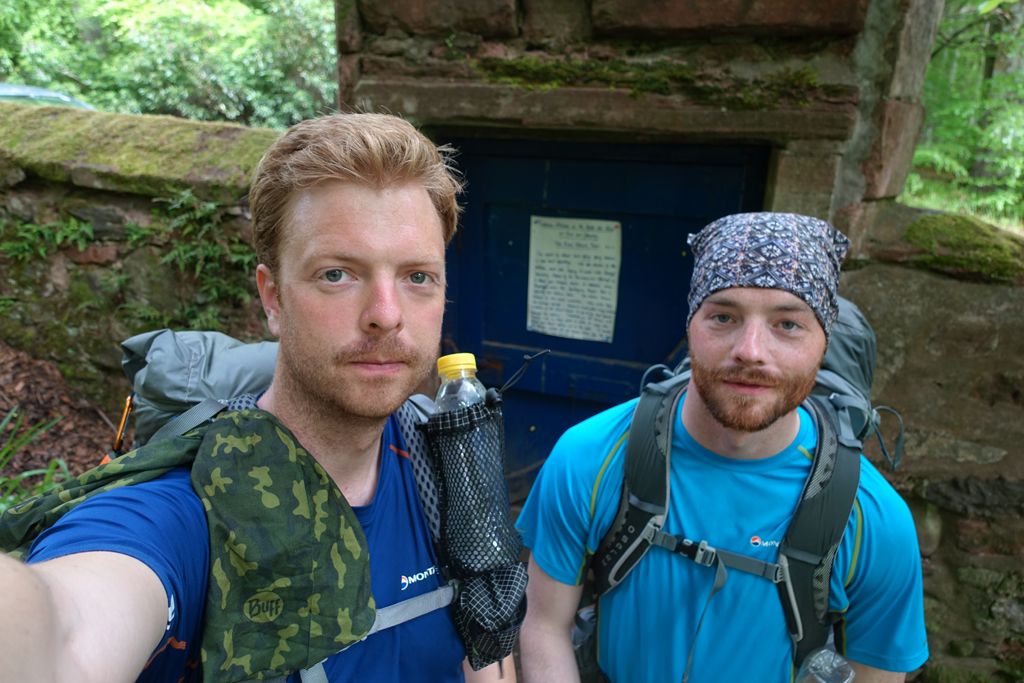
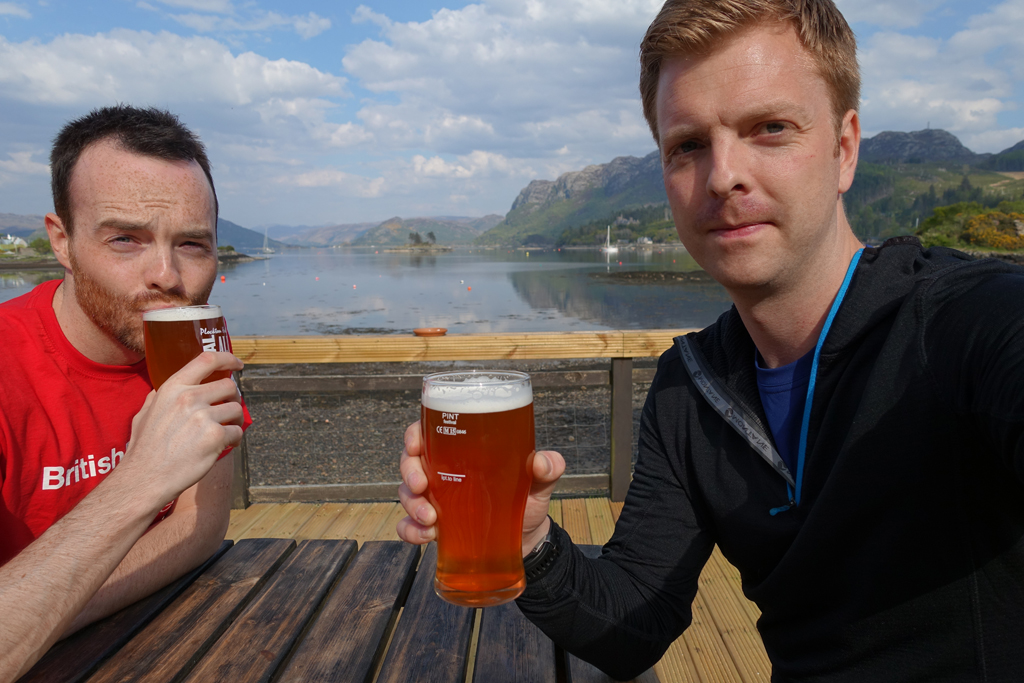
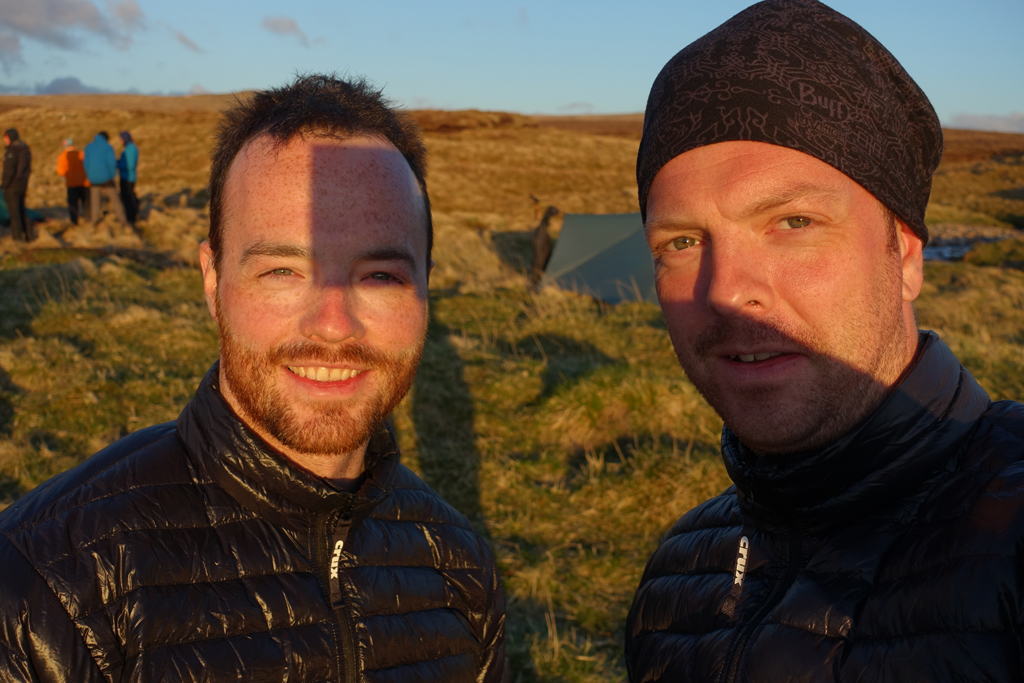

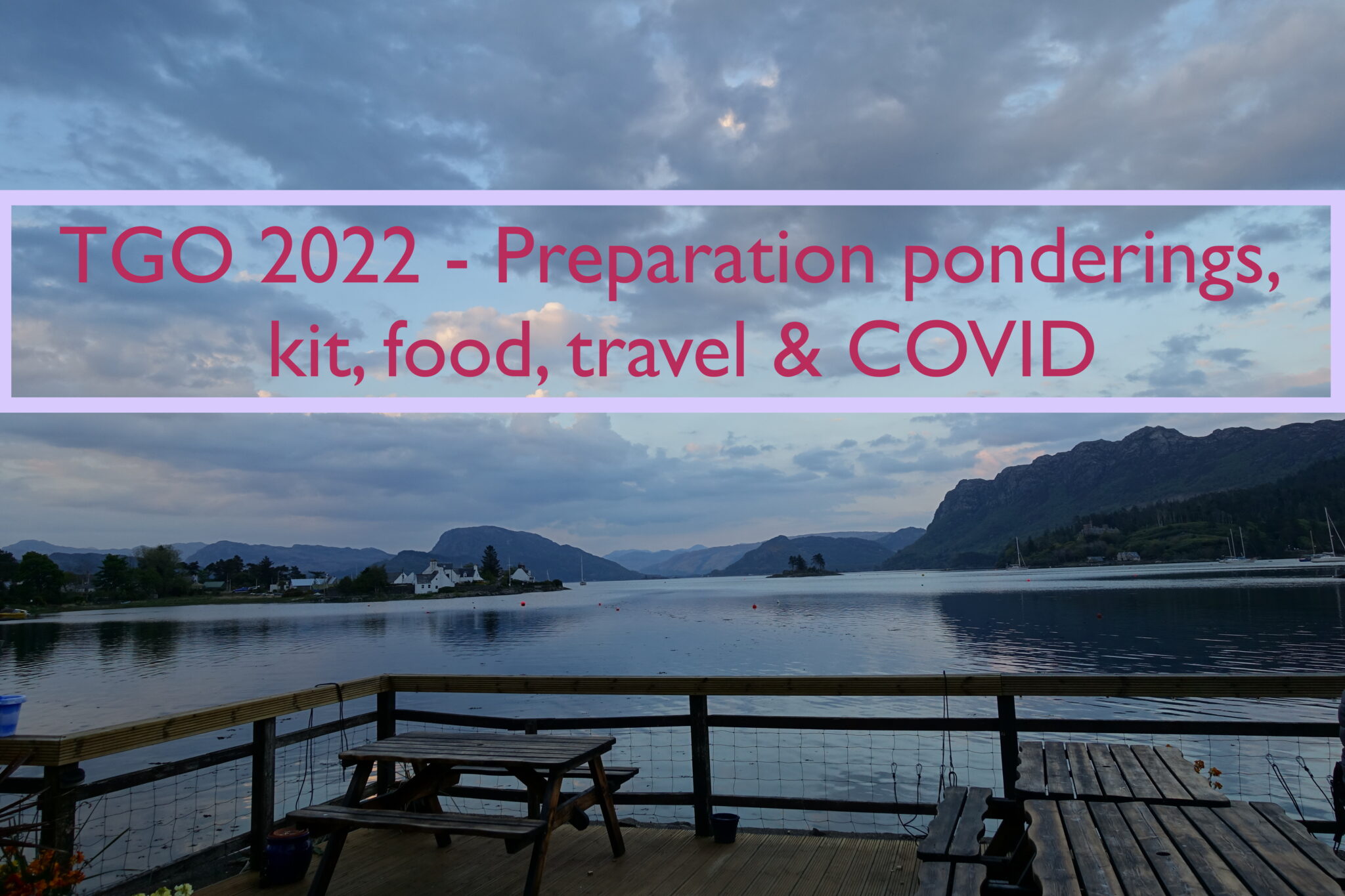

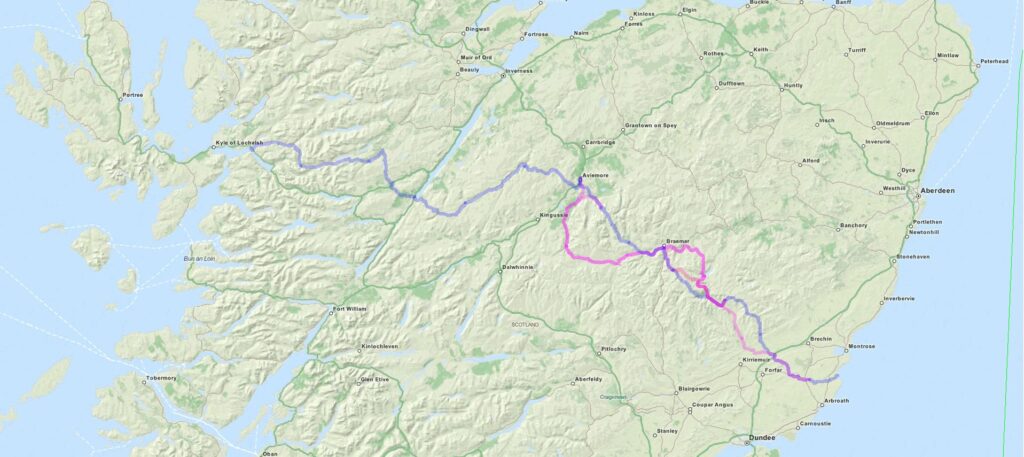
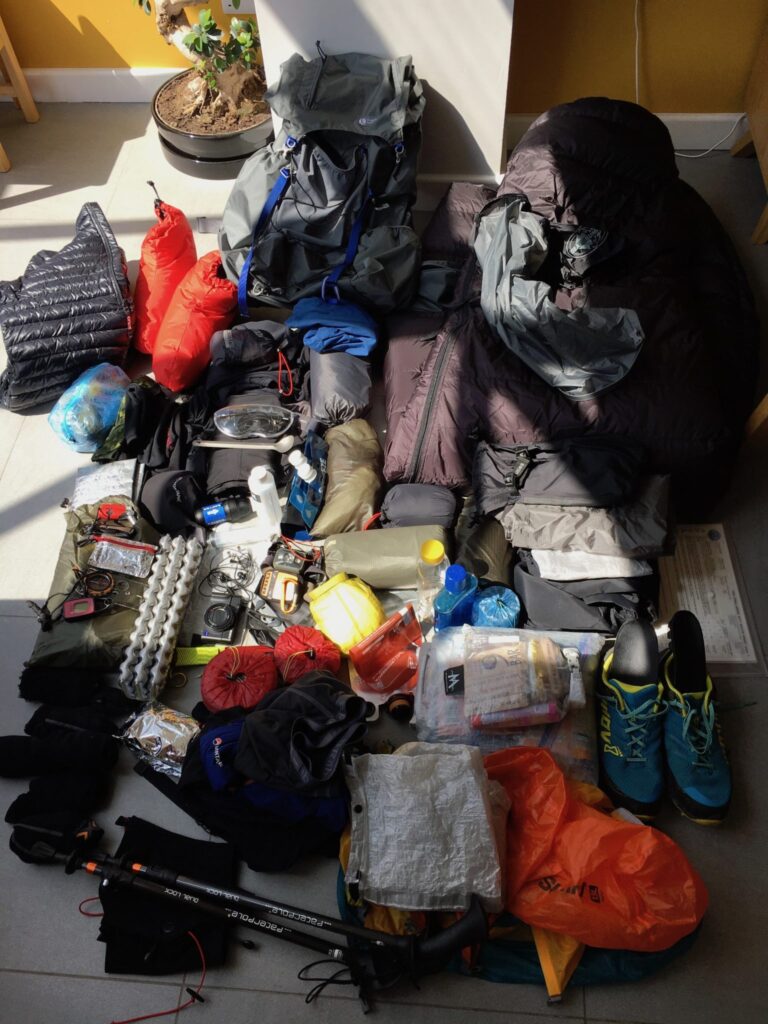











Pingback: TGOC22 Blogs and Photos - TGO Challenge